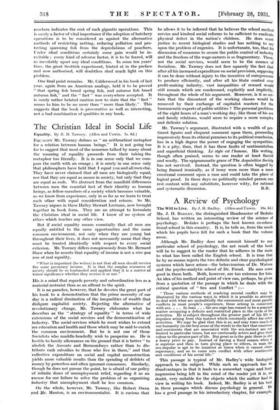Some Practical Salmon Problems Salmon Hatching and Salmon Migrations. Buckland
Lectures delivered in Edinburgh, 1930, by W. L. Calderwood, I.S.O., F.R.S.E. (Arnold. 4s. 6d.) Tins little book is not by any means a hatchery manual as its title might seem to imply, but is something very different and much more important. Mr. W. L. Calderwood, lately H.M. Inspector of Salmon Fisheries for Scotland, whose qualifications for the task had a world-wide recognition,
delivered in Edinburgh during 1930 a series of Buckland Lectures. . These were largely a resume of some matters con- cerning salmon which our author had already written in his book Salmon and Sea Trout, published earlier in the same year, and they are now set forth, in handy book form, in the graceful colloquial style of which Mr. Calderwood is a master. His aim, apparently, is the laudable one of guiding a more widely extended audience to higher, if more speculative, levels in discussion of salmon fishery.
Of matters more or less incidentally referred to, yet all of great interest, are facts regarding the durosit of their eggs by salmon in the gravels of the natural red Is observed and tested personally by the author ; records of salmon fortuitously ' captured far out in the deeps and of certain recaptures in the open sea of other fish which had been marked in shore waters (illustrated by a chart) and the deductions as to migratory and feeding habits to be drawn therefrom. The bearing which netting in river, estuary and the sea has upon the stock of fish is elsewhere shown ; the effects of temperature on the different runs of fish in the rivers are touched upon, and on a final page is given the highest known salmon leap in this country, being that of 11 feet 4 inches on the River Orrin, in Ross-shire. All these subjects may be left to titillate the reader's enjoyment as he comes upon them in course of perusal.
Mr. Calderwood's main theme is the value of so-called " artificial " hatching of salmon in so far as that may affect' the restoration, maintenance or development of the stock of salmon in our rivers. Probably few subjects in this con- nection have led to greater controversy. The Royal Corn' nEssioners of 1902 stated :—
"After a careful review of the evidence we recommend further investigation of the questions bearing upon the natural and artificial propagation of salmon before there is any expenditure of public money upon the establishment of hatcheries for supplying ova or young fish to the rivers of Great Britain."
The report upon a questionnaire conducted, ad hoc, by Mr. .7'. Arthur Hutton for the National Association of Fishery Boards as recently as 1929, arrived at much the same conclusion, but recommended experimental work on a large scale. One can hardly find fault with Mr. Calderwood, therefore, for giving us so little indication of what his personal views may be. He
contents himself with submitting such facts as are known— with one grave omission. He further describes in detail a practical investigation of the problem officially undertaken in Canada, in 1925, with the Sockeye salmon of the Pacific, a species whose habits differ at all stages from those of our‘ Atlantic salmon. It is something of a pity that Mr. Calder., wood should, even on the presumptive analogy, have written
"Under. natural hatching in this country, one fish would produce two. With eggs hatched artificially one fish would produce fully. seven. Or a pair of fish would produce four naturally, and fourteen artificially."
The danger is that such speculations may be accepted as facts. Countless millions of eggs have been " treated " in the United States without any marked beneficial result upon the depleted salmon yield, and many millions are now undergoing treatment in Canada. The omission above referred to is that our author nowhere indicates the cost of such gigantic operations. This is surely a factor of vital importance if the adoption of hatchery operations is to be considered as against the alternative methods of restricting netting, reducing pollution and pro- tecting spawning fish from the depredations of poachers. Under ideal conditions certainly some gain would be in- evitable; every kind of adverse factor, it is to be feared, will as inevitably upset any ideal conditions. In some ten years' time, the great Scottish experiment, hinted at in the preface and now authorised, will doubtless shed much light on this problem.
One final point remains. Mr. Calderwood in his book of last year, again from an American analogy, held it to be proved that spring fish breed spring fish, and autumn fish breed autumn fish," and the " fact " was everywhere accepted. It is surely rather belated caution now to state that the " fact " seems to him to be no more than "more than likely." This suggests that the book is provocative as well as interesting, not a bad combination of qualities in any book.












































 Previous page
Previous page